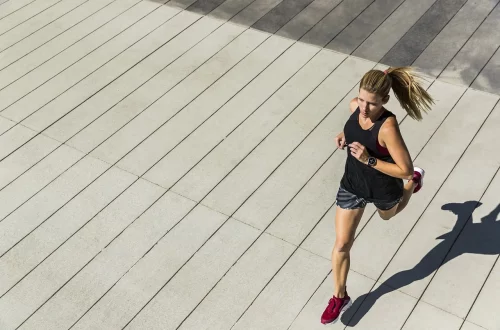
Top Machines for Glute Development: Enhance Your Workout Routine
In recent years, the focus on glute development has gained significant momentum in the fitness community. With a growing emphasis on aesthetics, performance, and overall strength, many individuals are seeking effective ways to target their glute muscles. The gluteal muscles, comprising the gluteus maximus, medius, and minimus, play a vital role in various movements, including running, jumping, and squatting. Moreover, well-developed glutes contribute to improved posture and can help alleviate lower back pain.
To maximize your workout routine and ensure that you are effectively engaging your glutes, incorporating the right machines in your training regimen can make a substantial difference. Whether you are a beginner looking to enhance your fitness journey or a seasoned athlete aiming to refine your technique, utilizing specialized equipment can elevate your glute workouts to new heights. From cable machines to dedicated glute trainers, the variety of options available allows for tailored approaches that can suit individual needs and preferences.
As we delve deeper into this topic, we will explore some of the top machines that can significantly aid in glute development. These machines not only offer resistance but also provide stability and support, making them ideal for both novices and advanced fitness enthusiasts. Understanding how to use these machines effectively will not only enhance your workout routine but also ensure that you are achieving the best possible results for your gluteal muscles.
Understanding the Importance of Glute Training
Training the glutes is not just about aesthetics; it is essential for overall functional fitness. The gluteal muscles are among the largest and most powerful muscles in the body, and they play a crucial role in various athletic activities. For instance, strong glutes enhance running performance, allowing for better acceleration and speed. They also contribute significantly to powerful jumps, making them vital for athletes in sports like basketball and volleyball.
Additionally, well-developed glutes support proper biomechanics during movements such as squatting and deadlifting. When the glutes are strong, they assist in stabilizing the pelvis, which helps maintain proper alignment of the spine. This stability reduces the risk of injury and improves overall strength. Many people experience lower back pain due to weakened glute muscles, as the body compensates by overworking other muscle groups. Strengthening the glutes can alleviate this discomfort and enhance core stability.
Moreover, training the glutes can lead to improved posture. The glutes help keep the pelvis in a neutral position, which is essential for maintaining an upright stance. As we spend more time seated in our daily lives, the glute muscles can become inactive, leading to imbalances and postural issues. Regular glute training can counteract these effects, promoting better alignment and reducing the risk of musculoskeletal problems.
Incorporating glute-specific exercises into your routine can yield numerous benefits, including increased strength, improved athletic performance, and enhanced overall well-being. Understanding the importance of glute training lays the foundation for selecting the right machines to support your fitness goals.
Top Machines for Targeting Glutes Effectively
When it comes to targeting the glutes, various machines are designed to isolate these muscles effectively. One of the standout machines is the hip abductor machine. This piece of equipment focuses on the gluteus medius and minimus, which are crucial for hip stability and lateral movement. By sitting in the machine and pushing the legs outward against resistance, users can effectively strengthen the outer glutes.
Another excellent option is the Smith machine. While traditionally used for squats and bench presses, the Smith machine can be adapted for glute-focused exercises. Performing squats or hip thrusts on the Smith machine allows for controlled movement and helps target the glutes more effectively. The ability to adjust the barbell height makes it suitable for users of all sizes and experience levels.
The glute bridge machine is specifically designed for hip extension exercises, providing a focused workout for the gluteus maximus. Users can adjust the machine to their comfort level and perform glute bridges with added resistance, making it an effective tool for building strength and size in the glutes.
Cable machines also offer versatility for glute training. The cable kickback is a popular exercise performed on cable machines, allowing for targeted isolation of the glutes. By attaching an ankle strap to the cable, users can extend their leg backward, engaging the glute muscles throughout the movement.
Incorporating these machines into your workout routine can lead to a well-rounded glute training regimen. It’s essential to vary your exercises and include different machines to ensure comprehensive development of all glute muscle groups.
Creating a Balanced Workout Routine
To achieve optimal glute development, it’s crucial to create a balanced workout routine that incorporates various exercises and machines. While focusing on glute-specific machines is essential, integrating compound movements and free weights can complement your training and promote overall strength.
Begin your workout with compound exercises like squats and deadlifts, which engage multiple muscle groups, including the glutes. These movements activate the glutes effectively while also working the legs and core. Following up with machine-based exercises allows for targeted isolation of the glute muscles, maximizing the effectiveness of your training session.
Incorporate a mix of rep ranges to stimulate muscle growth. Aim for higher reps (12-15) on machines like the hip abductor to enhance muscular endurance, while lower reps (6-8) on compound lifts can promote strength gains. Gradually increase the weight as you become stronger to continue challenging your muscles.
Don’t forget to include some flexibility and mobility work in your routine. Stretching the hip flexors and quadriceps can help maintain proper muscle balance and prevent tightness, which can hinder glute activation. Yoga and dynamic stretches are excellent additions to improve flexibility and overall range of motion.
Lastly, remember to prioritize recovery. Rest days are crucial for muscle repair and growth, and incorporating foam rolling or massage therapy can aid in recovery. Listening to your body is essential; if you feel fatigued or sore, allowing adequate time for recovery will ultimately lead to better results in your glute training journey.
In conclusion, developing strong glutes requires a well-rounded approach that combines various machines, exercises, and recovery strategies. By understanding the importance of glute training and utilizing the right equipment, you can enhance your workout routine and achieve your fitness goals.
**Disclaimer:** This article is for informational purposes only and does not constitute medical advice. If you have any health concerns or medical conditions, please consult a healthcare professional before starting any new exercise program.




